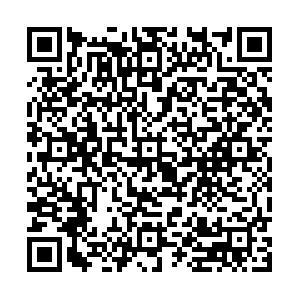Value of direct peroral cholangioscopy combined with laser lithotripsy in treatment of patients with difficult common bile duct stones
-
摘要: 目的探讨经口直视胆道内镜联合激光碎石治疗困难胆总管结石的效果。方法选取2014年10月-2017年10月于兰州市第一人民医院行经内镜逆行胰胆管造影取石术的困难胆总管结石患者21例,所有患者行小内镜下十二指肠乳头括约肌切开术(切开缠头皱襞)后以结石最大直径或加2 mm为标准选取1015 mm球囊行球囊扩张术;小乳头或憩室旁乳头则尽量切开乳头开口再扩张;憩室内乳头无法切开者直接球囊扩张。以10 mm取石球囊顺利进出为乳头开口扩大标准。超细内镜自乳头开口直接插入胆总管,直视下进行激光碎石,特制网篮取石并反复冲洗胆总管。结果超细内镜均能进入胆总管并发现结石,成功率为100%。其中16例直接插入(66.7%),导丝辅助者5例(23.8%),外套管辅助2例(9.5%)。平均插入时间(4.9±2.9)min。碎石成功率为81.0%,碎石失败4例(19.0%)。无严重并发症,无手术相关死亡。1例(4.8%)术后发烧、右上腹痛并压痛,白细胞增高,降钙素原升高,以胆道感染给予抗生素治疗后好转。1例(4.8%)发生中度术后胰腺炎,经保守治疗好转。结论经口直视胆道内镜对困难胆总管结石的诊...Abstract: Objective To investigate the clinical effect of direct peroral cholangioscopy combined with laser lithotripsy in the treatment of difficult bile duct stones. Methods A total of 21 patients with difficult bile duct stones who underwent cholecystolithotomy under endoscopic retrograde cholangiopancreatography in Lanzhou First People's Hospital from October 2014 to October 2017 were enrolled. All patients were treated with small endoscopic sphincterotomy, and balloons with a size of 10-15 mm were selected based on the maximum diameter ( or maximum diameter + 2 mm) of stones to perform balloon dilatation. The carunculae minor or the juxta-diverticulum papillae were cut open and then dilated, and those which could not be cut open were directly dilated with balloons. The criterion for papillary dilatation was that a 10 mm balloon could pass the papillary opening smoothly. The ultrafine endoscope was inserted into the common bile duct via the papillary opening, laser lithotripsy was conducted under the direct view, a specially designed basket was used to remove the stones, and the common bile duct was rinsed repeatedly. Results The ultrafine endoscope successfully entered the common bile duct and found the stones, with a success rate of 100%. Of all patients, 16 ( 66. 7%) underwent direct insertion, 5 ( 23. 8%) underwent insertion assisted by guide wire, and 2 ( 9. 5%) underwent insertion assisted by outer casing. The mean insertion time was 4. 9 ± 2. 9 minutes. The success rate of lithotripsy was 81. 0%, and 4 patients ( 19%) experienced failed lithotripsy. There were no serious complications or surgery-related deaths during the treatment. One patient ( 4. 8%) experienced fever, right upper abdominal pain and tenderness, and increases in leukocytes and procalcitonin after surgery and was improved after the treatment with antibiotics for biliary tract infection. One patient ( 4. 8%) experienced moderate postoperative pancreatitis and was improved after conservative treatment. Conclusion Direct peroral cholangioscopy is a safe and effective technique for the diagnosis and treatment of difficult common bile duct stones. In particular, its combination with laser lithotripsy shows great advantages.
-
Key words:
- choledocholithiasis /
- peroral direct cholangioscopy /
- lithotripsy, laser /
- therapy
-
[1]LIU XC, KA SQ, WU DM, et al.Direct peroral cholangioscopy in the diagnosis and treatment of biliary obstruction[J].Chin J Dig Endosc, 2013, 30 (5) :284-285. (in Chinese) 刘雄昌, 卡世全, 吴德明, 等.直接胆道内镜在胆道梗阻诊疗中的应用[J].中华消化内镜杂志, 2013, 30 (5) :284-285. [2]ZIMMER V, LAMMERT F.A“tandem approach”using sequential diagnostic (ultraslim) and therapeutic (standard size) direct freehand cholangioscopy to guide mechanical lithotripsy of a giant cystic duct remnant stone[J].Endoscopy, 2017, 49 (6) :e160-e162. [3]HUANG YH, CHANG H, YAO W, et al.Peroral direct cholangioscopy using an ultra-slim gastroscopy assisted by a snare[J].Chin J Dig Endosc, 2015, 32 (2) :86-88. (in Chinese) 黄永辉, 常虹, 姚炜, 等.圈套器辅助超细胃镜实施经口直接胆道镜技术的初步应用[J].中华消化内镜杂志, 2015, 32 (2) :86-88. [4]HOCHBERGER J, BAYER J, MAY A, et al.Laser lithotripsy of difficult bile duct stones:Results in 60 patients using a rhodamine6G dye laser with optical stone tissue detection system[J].Gut, 1998, 43 (6) :823-829. [5]ZHANG DH, ZHANG K.Operation skills of endoscopic retrograde cholangiopancreatography in pancreaticobiliary patients with periampullary duodenal diverticula[J].J Clin Hepatol, 2016, 32 (9) :1760-1762. (in Chinese) 庄东海, 张锎.合并十二指肠乳头旁憩室的胆胰疾病患者行经内镜逆行胰胆管造影的操作技巧[J].临床肝胆病杂志, 2016, 32 (9) :1760-1762. [6]URAKAMI Y, SEIFERT E, BUTKE H.Peroral direct cholangioscopy (PDCS) using routine straight-view endoscope:First report[J].Endoscopy, 1977, 9 (1) :27-30. [7]JAKOBS R, PEREIRA-LIMA JC, SCHUCH AW, et al.Endoscopic laser lithotripsy for complicated bile duct stones:Is cholangioscopic guidance necessary?[J].Arq Gastroenterol, 2007, 44 (2) :137-140. [8]PIRAKA C, SHAH RJ, AWADALLAH NS, et al.Transpapillary cholangioscopy-directed lithotripsy in patients with difficult bile duct stones[J].Clin Gastroenterol Hepatol, 2007, 5 (11) :1333-1338. [9]NEUHAUS H, HOFFMANN W, GOTTLIEB K, et al.Endoscopic lithotripsy of bile duct stones using a new laser with automatic stone recognition[J].Gastrointest Endosc, 1994, 40 (6) :708-715. [10]CHO YD, CHEON YK, MOON JH, et al.Clinical role of frequency-doubled double-pulsed yttrium aluminum garnet laser technology for removing difficult bile duct stones (with videos) [J].Gastrointest Endosc, 2009, 70 (4) :684-689. [11]LIU F, JIN ZD, ZOU DW, et al.Efficacy and safety of endoscopic biliary lithotripsy using FREDDY laser with a radiopaque mark under fluoroscopic guidance[J].Endoscopy, 2011, 43 (10) :918-921. [12]PATEL S, KIKER D, LINSTEADT J, et al.Holmium:YAG laser safety data on bile duct epithelium in the porcine model[J].Gastrointest Endosc, 2009, 69 (5) :258. [13]ITOI T, SOFUNI A, ITOKAWA F, et al.Evaluation of residual bile duct stones by peroral cholangioscopy in comparison with balloon-cholangiography[J].Dig Endosc, 2010, 22 (Suppl 1) :s85-s89. [14]DAS A, ISENBERG G, WONG RC, et al.Wire-guided intraductal US:An adjunct to ERCP in the management of bile duct stones[J].Gastrointest Endosc, 2001, 54 (1) :31-36. -

 本文二维码
本文二维码
计量
- 文章访问数: 2006
- HTML全文浏览量: 16
- PDF下载量: 394
- 被引次数: 0


 PDF下载 ( 1894 KB)
PDF下载 ( 1894 KB)

 下载:
下载:

